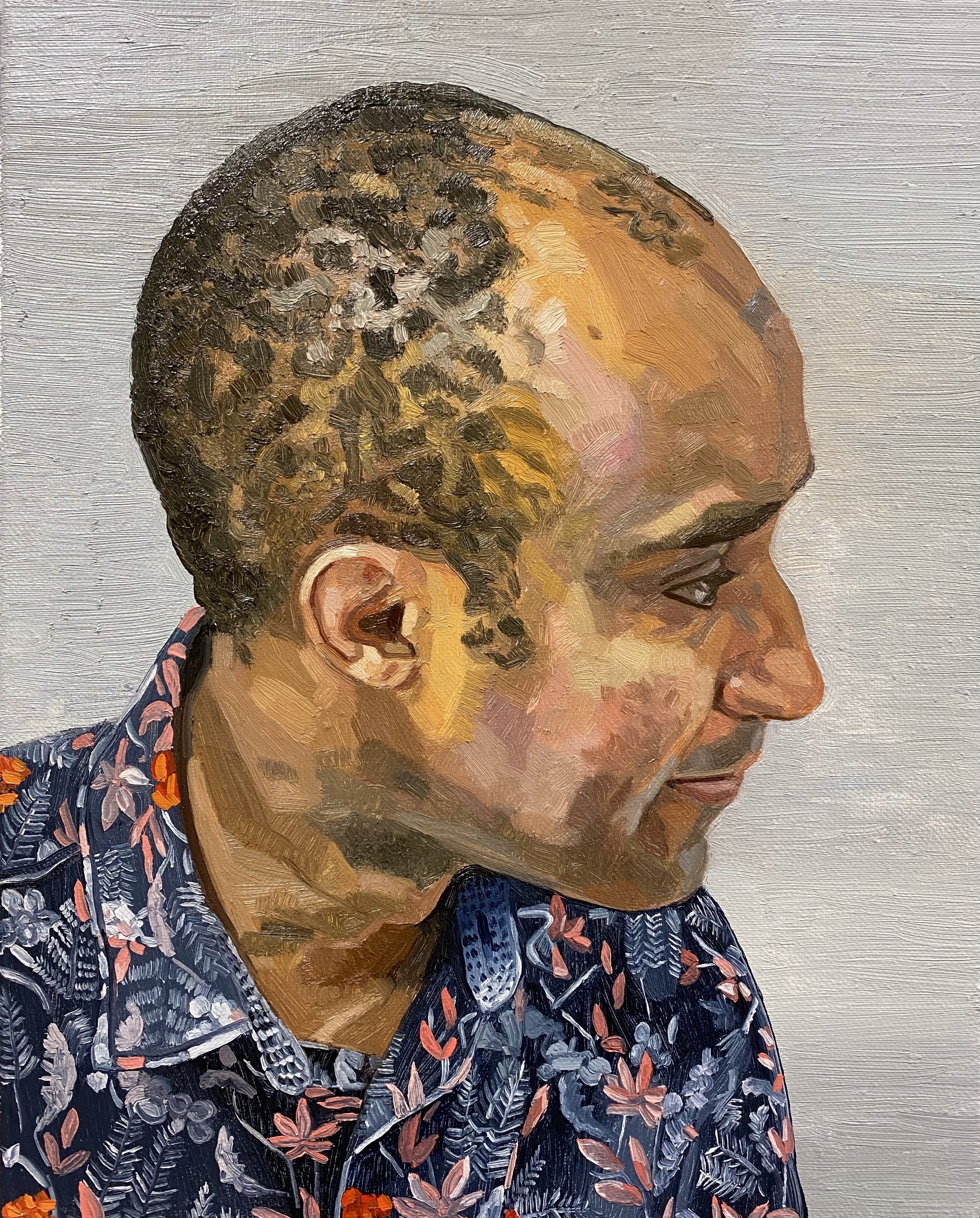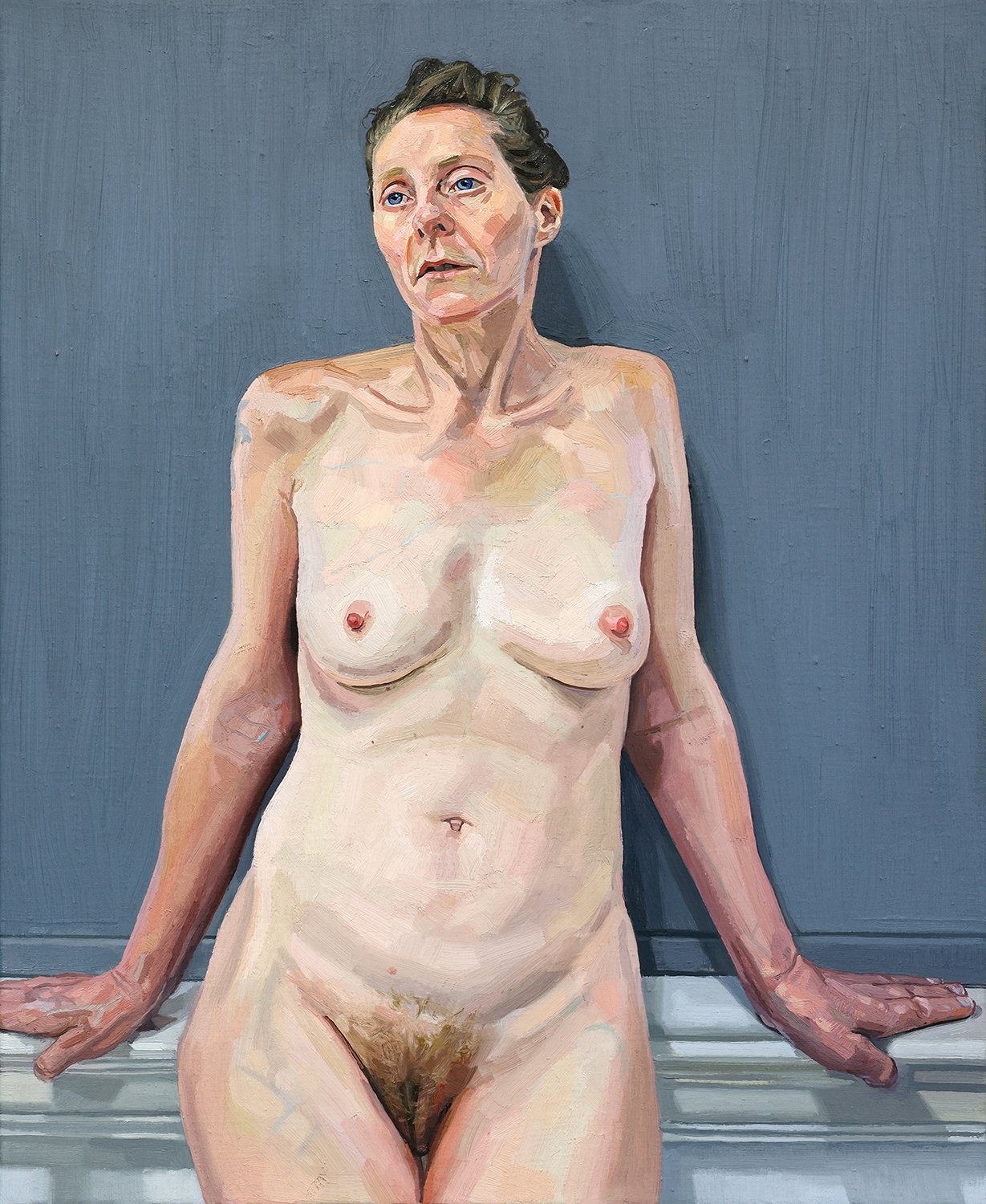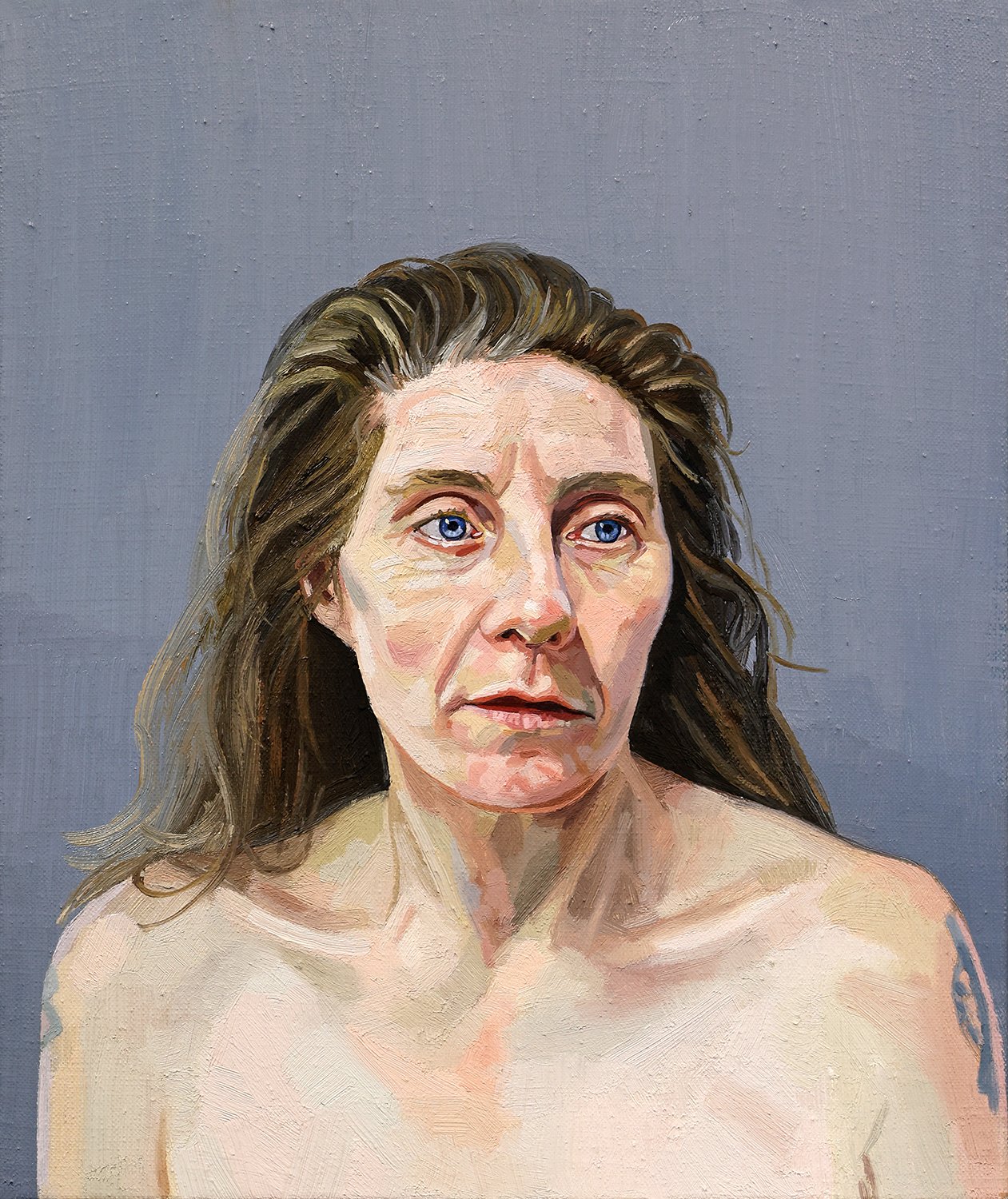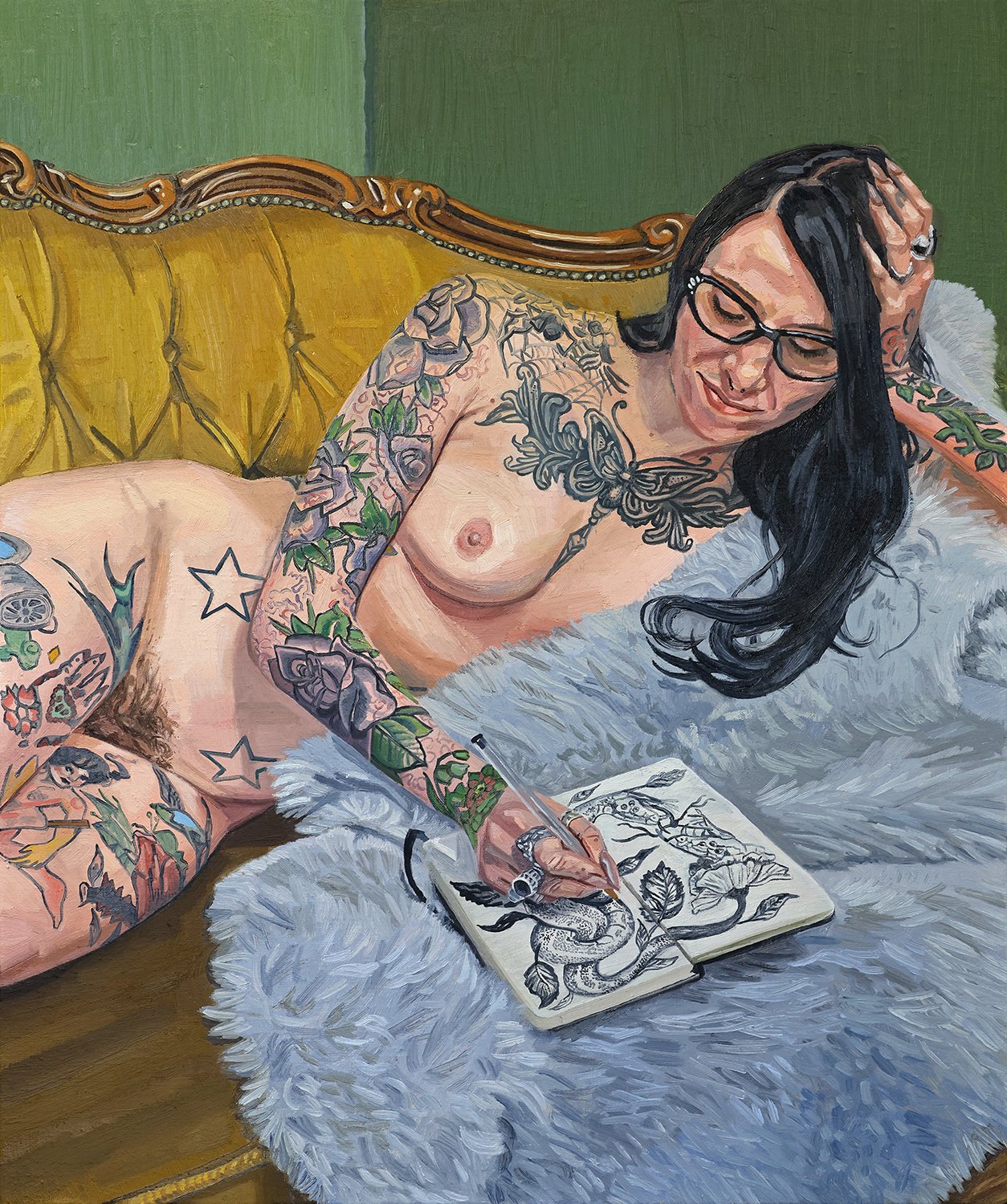ARTIST INTERVIEW: Richard Kitson
Tell me about yourself, what inspired you to become an artist?
Initially, I was inspired by the landscape around my home in South Yorkshire. I live on the edge of the Peak District and in my youth my family took regular holidays to Whitby, and I loved the drive over the North Yorkshire Moors. I always drew as a youngster and as I got older and my ability improved, painting became a way to express my love of the landscape. It wasn’t until I was doing a project in school, around year 9 I think, that involved drawing portraits that I discovered an ability to capture a likeness. From then on, I developed a fascination with portraiture that hasn’t gone away.
Your figurative works are painted during live sittings, why do you prefer painting with a live sitter? How do you think that this changes the overall result of a painting compared to if you painted from a photograph?
It’s interesting because the pandemic had a massive effect on the way that I make portraits due to not being able to be in the same room as my sitters. Up until that point I always insisted on working solely from life and I still believe this method encourages the most favourable outcomes. Nothing can replace your eye’s ability to observe subtle difference in skin tones and the contrast of textures in a composition. I also like having the sitter present as we can talk about what’s going on in our day to day lives and I can involve them in the painting process. However, over the past two years I have started using photographic reference images alongside live sittings in order to make more progress on my work. This helps mainly with establishing the composition but there are usually some elements such as the chair and studio walls that I can still observe from life.
The Rose Moth
Oil on Canvas, 24x20 inches 2022-23
Usually, you observe your sitter over a duration of weeks or even months. How did you adapt your process for Portrait Artist of The Year when you only had hours to get to know your sitter?
Good question! In this situation I had to rely on my technical ability and treat the whole experience for what it was as a TV show and not me working in my studio. At the time I was a full time A level art teacher so I was used to doing quick demonstrations for students so, I had some facility to work quickly when called upon. My sitter Kadeena Cox was very nice and accommodated me working from life so this helped a lot too.
What is it that fascinates you about painting the human body?
For me the body is just as individual as someone’s head and face. The way someone stands or sits, they have a signature. For example, I know there are people who can recognise me from a distance just by the way that I stand or walk. It’s the same with painting the human figure. Painting the luminosity of flesh over bone has preoccupied painters for centuries and I find myself ever more fascinated by it. I also find it very challenging and as such it helps my development as a painter.
Suzi Standing, 2022
Oil on linen, 22x18 inches
Tell me about your process for creating one of your works, where do you find your inspiration?
Unless I’m working on a commission, I tend to work with the same sitters so I suppose they are my initial inspiration. I like to make a painting from scratch in the sense of stretching and priming my own canvases and considering what it might be used for. I usually begin with a light sketch with thinned down paint to establish a loose composition. I paint directly onto the white canvas, building the painting by mixing each colour individually and maintaining the texture of the paint. I am fortunate to have a foundation in academic drawing which underpins my work and enables me to let a work develop naturally but with an element of design and control.
You mostly use your family and friends as your subject, why is this?
Put simply, they are the most available. I mainly choose sitters based on how reliable they are, not how they look. There is a saying writers use which is, ‘write what you know’ and I use the same approach for my work. I’m not a natural when it comes to creating a narrative. Instead, I try to let any narrative element in my work develop naturally.
Sampa, 2022
Oil on canvas 10x8 inches
Who is your favourite artist? If they were sat next to you right now, what would you ask them?
I couldn’t choose a favourite but certainly Rembrandt and Lucian Freud have been the most influential with regards to my figurative work. I have always admired John Constable too in the way he painted and how he found fascination in revisiting the same places, much in the same way Rembrandt and Freud often painted the same sitters. I would be too shy to ask any of these artists anything, I’d just buy them a drink.
A Young Painter, 2022
Oil on linen, 10x8 inches
What has been your greatest achievement so far as an artist?
I think it’s the fact that I’m still doing it.
Why do you think art is important in society?
As a form of communication, art is more ancient than spoken language. Society may have evolved but the need and desire to create will exist for as long as people occupy the planet. I think when words fail art can always make up for it.











